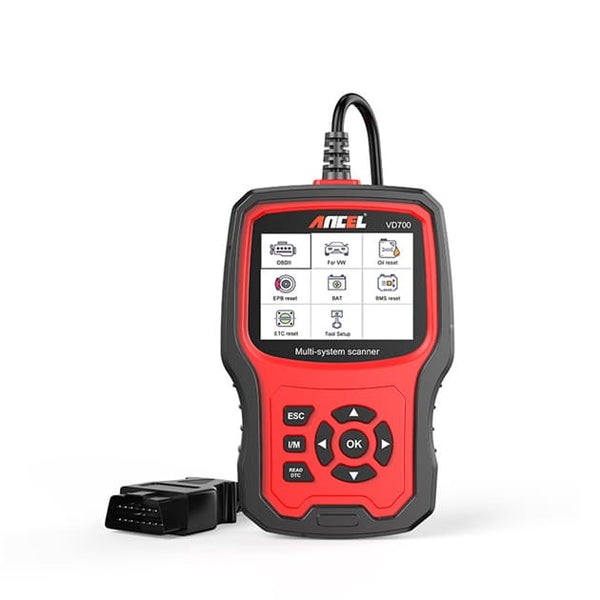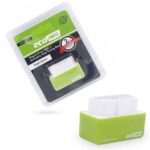When you’re using an automotive scanner to check your car’s health, you might come across the term “I/M Readiness.” If you’re wondering What Does Im Mean On An Obd2 Scanner, you’re not alone. This status is a critical indicator related to your vehicle’s emissions system, and understanding it can save you time and potential headaches, especially when it comes to emissions testing.
In essence, “I/M Readiness” stands for “Inspection and Maintenance Readiness.” It’s a status reported by your car’s onboard diagnostic system (OBD-II) to indicate whether the vehicle’s emission control systems have been tested and are ready for an official emissions inspection. If your scanner displays “I/M Not Ready,” it means that some emission system monitors haven’t completed their diagnostic checks. This can prevent your vehicle from passing an emissions test, even if there isn’t a major problem.
Breaking Down I/M Readiness: Key Emission Systems Monitored
The I/M Readiness check is not just a single test; it’s an umbrella term for a series of diagnostic tests run on various emission-related systems in your vehicle. These systems are crucial for reducing harmful pollutants released into the environment. Let’s look at some key components that I/M Readiness monitors:
Catalytic Converter: This component is vital in reducing harmful gases like carbon monoxide, hydrocarbons, and nitrogen oxides from your car’s exhaust. A “Not Ready” status for the catalytic converter could suggest issues with the converter itself or related sensors and components.
Oxygen Sensors: Oxygen sensors play a crucial role in monitoring the oxygen levels in the exhaust gases. This data helps the engine control module (ECM) adjust the air-fuel mixture for optimal combustion and emissions control. If oxygen sensors are “Not Ready,” it might indicate sensor malfunctions or exhaust system leaks.
Evaporative Emissions (EVAP) System: The evaporative emissions control system prevents fuel vapors from escaping into the atmosphere. A “Not Ready” status in the EVAP system can point to leaks or malfunctions within the fuel tank, vapor lines, or related components.
Other Important Monitors: Beyond these, I/M Readiness can also monitor systems like:
- EGR System (Exhaust Gas Recirculation): Reduces NOx emissions.
- Secondary Air Injection System: Assists in cold start emissions reduction.
- Fuel System: Checks for fuel delivery and metering issues.
How to Check I/M Readiness Using Your OBD2 Scanner
Checking the I/M Readiness status is straightforward with a car diagnostic tool. Most OBD2 scanners, from basic to professional models, offer a “Readiness Monitor” or “I/M Readiness” function. Here’s how it generally works:
- Connect your OBD2 scanner to your vehicle’s diagnostic port (usually located under the dashboard on the driver’s side).
- Turn on the ignition (no need to start the engine in most cases, but follow your scanner’s instructions).
- Navigate to the “Readiness Monitor” or “I/M Readiness” option in your scanner’s menu.
- The scanner will communicate with your car’s ECM and display the I/M Readiness status for each monitored system.
You’ll typically see one of these statuses for each monitor:
- Ready (or Pass): This is the ideal status. It means the system has completed its self-diagnostic checks and is functioning correctly. Your car is likely ready for an emissions test in terms of this specific monitor.
- Not Ready (or Fail): This indicates that the system has not yet completed its self-checks. It doesn’t necessarily mean there’s a fault, but it does mean your car might fail an emissions test.
- Incomplete (or N/A): This status means the diagnostic test for this system has started but hasn’t finished. This is often seen if the vehicle hasn’t been driven through a complete “drive cycle” after a battery disconnection or code reset.
Related Reading: What OBD2 Scanner Do And Is It Worth It?
Common Reasons Behind an “I/M Not Ready” Status
Seeing “I/M Not Ready” can be concerning, but it’s often not a sign of a major malfunction. Here are common reasons why you might encounter this status:
- Recent Battery Disconnection or ECM Reset: If you’ve recently disconnected your car’s battery or had the ECM (Engine Control Module) reset (perhaps after a repair or code clearing), the I/M monitors will reset to “Not Ready.” The system needs to rerun its diagnostic routines.
- Short Drives and Incomplete Driving Cycles: Modern vehicles require specific driving conditions to complete all emission system self-checks. Short trips or primarily city driving might not provide the necessary conditions (speed, temperature, load) for all monitors to run. This is especially true for monitors like the EVAP system, which often require overnight cooldown periods.
- Underlying Faulty Sensors or Components: While “Not Ready” doesn’t always mean a fault, it can be a symptom. If a sensor is malfunctioning or a component is failing, the system might not be able to complete its diagnostic test successfully, resulting in a “Not Ready” status.
- Deferred Vehicle Maintenance: Neglecting regular car maintenance can indirectly lead to “Not Ready” statuses. For example, an aging or inefficient fuel system component might prevent the fuel system monitor from achieving a “Ready” state.
 VAG com scanner | ANCEL
VAG com scanner | ANCEL
Alt text: ANCEL VD700 OBD2 scanner displaying vehicle diagnostic information on screen, highlighting its use for VAG vehicle diagnostics and I/M readiness checks.
Getting to “I/M Ready” and Passing Your Emissions Test
If your OBD2 scanner indicates an “I/M Not Ready” status, especially before an emissions test, here’s what you can do:
- Drive Your Car Through a Complete OBD2 Drive Cycle: This is often the simplest solution. A drive cycle involves a specific pattern of acceleration, deceleration, steady speed driving, and idling that allows all emission monitors to run and complete their checks. Drive cycle procedures vary by vehicle manufacturer and model. Consult your car’s repair manual or search online for the specific drive cycle for your vehicle.
- Extended Normal Driving: If you don’t want to follow a specific drive cycle, simply driving your car under normal conditions for a few days, including highway and city driving, can often be enough to set the I/M monitors to “Ready.”
- Address Underlying Issues: If the “Not Ready” status persists after driving, it might indicate a genuine problem. Use your OBD2 scanner to check for any Diagnostic Trouble Codes (DTCs). Fault codes can pinpoint the problematic system. Address any identified faults by repairing or replacing faulty sensors or components.
- Professional Diagnosis: If you’re unsure or codes persist, take your vehicle to a qualified mechanic for a professional diagnosis and repair. They can use advanced diagnostic tools to pinpoint the cause of the “Not Ready” status.
I/M Readiness: Your Pre-Emissions Test Green Light
Before you head to your local emissions testing station, always check your vehicle’s I/M Readiness status with an OBD2 scanner. It’s a quick and easy way to preemptively avoid failing the test.
While some states might offer waivers or conditional passes if your vehicle shows “Not Ready,” it’s always best to ensure all monitors are in the “Ready” state. This confirms that your car’s emission systems are functioning as intended and helps you pass the test without any issues.
Conclusion: I/M Readiness – A Key to Vehicle Health and Compliance
Understanding what IM means on an OBD2 scanner and specifically I/M Readiness is crucial for responsible vehicle ownership. It’s more than just about passing an emissions test; it’s about ensuring your vehicle is running efficiently and minimizing its environmental impact.
A “Not Ready” status is a signal – it might be a simple matter of needing to drive more, or it could indicate an underlying issue requiring attention. Using an ANCEL scanner or another quality OBD2 scanner empowers you to monitor your car’s I/M Readiness, address potential problems early, and maintain your vehicle in optimal condition. Whether you opt for a user-friendly bluetooth obd2 reader for quick checks or a more advanced scanner for in-depth diagnostics, having the ability to understand and act on I/M Readiness data is invaluable.
FAQs
How long does it take for an OBD2 scanner to check I/M Readiness?
Typically, an OBD2 scanner can check I/M Readiness in a matter of seconds to a minute or two. The exact time can vary slightly depending on the scanner and your vehicle’s computer processing speed.
Will my car fail emissions if the I/M Readiness is not completed?
Yes, in most regions with emissions testing, your car will likely fail if the I/M Readiness status shows “Not Ready” for key monitors like the catalytic converter, oxygen sensors, and EVAP system. Emissions testing centers usually require these monitors to be in a “Ready” state to ensure the emission control systems have been checked and are functioning.
Does a Bluetooth OBD2 scanner work the same way as a wired scanner for I/M Readiness?
Yes, Bluetooth OBD2 scanners and wired scanners function identically when it comes to checking I/M Readiness. The primary difference is the connectivity method. Bluetooth scanners offer wireless convenience, allowing you to view the data on your smartphone or tablet, while wired scanners connect directly to the OBD2 port and typically have a built-in screen. Both types provide the same diagnostic information, including I/M Readiness status.
